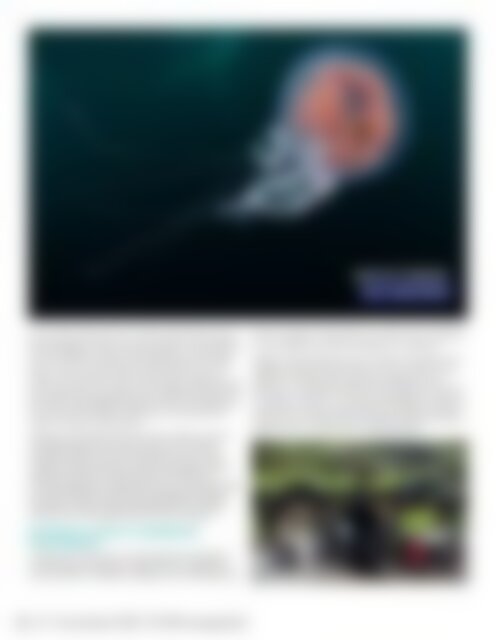NZPhotographer Issue 37, November 2020
As of December 2022, NZPhotographer magazine is only available when you purchase an annual or monthly subscription via the NZP website. Find out more: www.nzphotographer.nz
As of December 2022, NZPhotographer magazine is only available when you purchase an annual or monthly subscription via the NZP website. Find out more: www.nzphotographer.nz
You also want an ePaper? Increase the reach of your titles
YUMPU automatically turns print PDFs into web optimized ePapers that Google loves.
MAUVE STINGER<br />
F6.3, 1/100s, ISO100<br />
You will also often spot us in areas other divers avoid<br />
like the plague; often near the surface in the middle of<br />
a raft of jellyfish or salps. These gelatinous critters get<br />
stuck in your hair, dive gear and some pack a nasty<br />
sting so why on earth are we here? Well, over the<br />
years we started to notice that juvenile deepsea fishes<br />
and squids are using these rafts of jellies for protection.<br />
We have photographed species that were previously<br />
only known from depths well past scuba dive limits<br />
within a meter of the surface.<br />
Although warm tropical seas and clear waters are lovely;<br />
I will always prefer to dive close to home. As a marine<br />
scientist the thing I love most is starting to know an area,<br />
understand the ecosystem and start to recognise unique<br />
species or behaviours. I genuinely think that the most<br />
amazing images are captured when you are fully immersed<br />
in your environment, and that the challenges of diving in<br />
temperate waters pushes photographers to be creative<br />
and truly show their appreciation for their homeland!<br />
take a camera underwater you need to be confident<br />
in your abilities as a diver, freediver, or swimmer.<br />
Safety should always be your number one priority and<br />
adding a technical task when you are unsure of your<br />
ability to maintain your buoyancy, gauge your air<br />
pressure, or undertake safety stops should not even be<br />
an option. However, if you are comfortable as a free-or<br />
scuba diver and you are looking at starting to capture<br />
some of your underwater encounters there are several<br />
pathways you can go down regarding gear.<br />
THE PRACTICALITIES OF UNDERWATER<br />
PHOTOGRAPHY<br />
Just like any other form of specialised photography;<br />
underwater photography requires time, experience<br />
and monetary investment. Before even attempting to<br />
56 <strong>November</strong> <strong>2020</strong> <strong>NZPhotographer</strong>


















